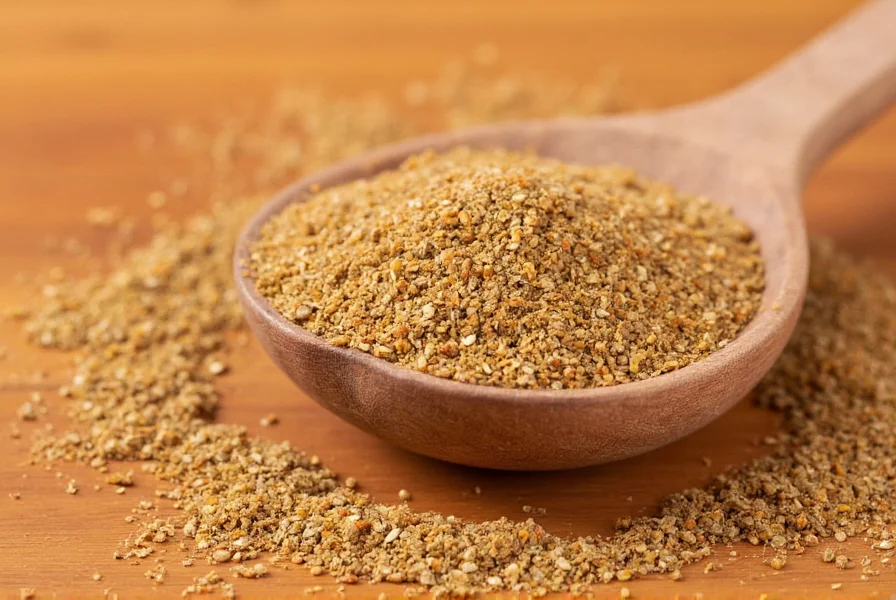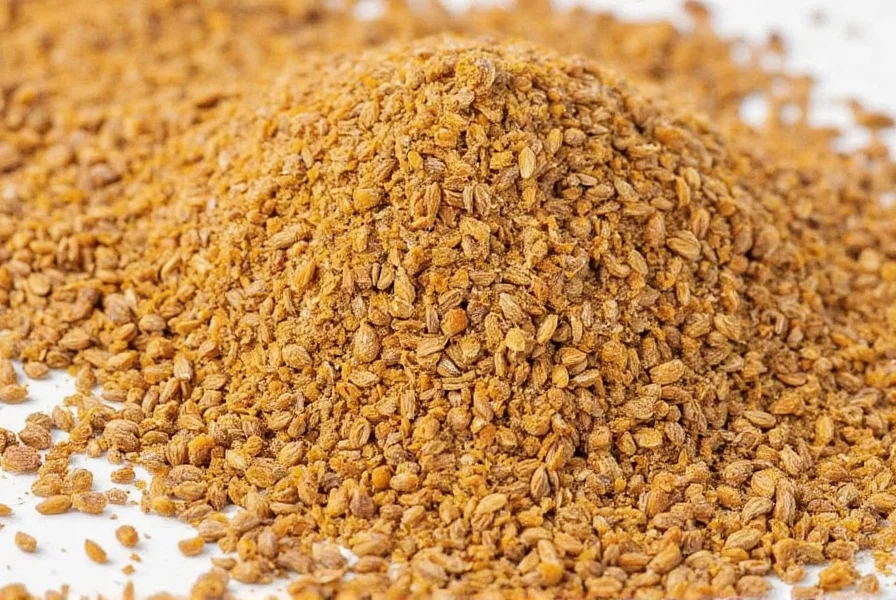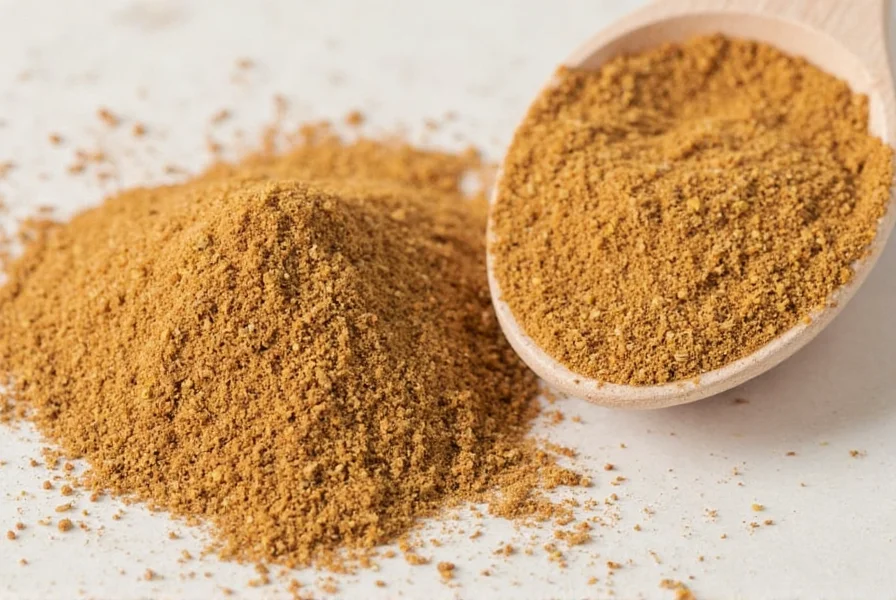Understanding the nuances of ground cumin transforms ordinary dishes into extraordinary culinary experiences. This comprehensive guide explores everything home cooks and professional chefs need to know about this indispensable spice.
What Exactly Is Ground Cumin?
Ground cumin represents the powdered form of dried cumin seeds (Cuminum cyminum), a flowering plant in the parsley family. The transformation from seed to powder involves harvesting ripe cumin fruits, separating the seeds, and grinding them into a fine consistency. This processing method significantly impacts both flavor release and shelf life compared to whole cumin seeds.
While cumin seeds maintain their essential oils longer due to protective outer layers, ground cumin provides immediate flavor dispersion in dishes. This fundamental difference explains why many traditional recipes specify whether to use seeds or powder—each delivers distinct culinary effects.
Flavor Profile and Sensory Characteristics
Ground cumin offers a complex flavor profile that's simultaneously earthy, warm, and slightly bitter with subtle citrus undertones. When properly stored and fresh, it releases a distinctive aroma often described as peppery with hints of lemon. The color ranges from light tan to rich ochre depending on origin and processing methods.
Several factors influence ground cumin's sensory qualities:
| Factor | Impact on Flavor |
|---|---|
| Geographic origin | Indian cumin tends more pungent; Middle Eastern varieties milder |
| Roasting before grinding | Enhances nuttiness, reduces bitterness |
| Grind fineness | Finer grind releases flavor faster but degrades quicker |
| Freshness | Freshly ground has vibrant citrus notes; stale loses complexity |
Culinary Applications Across Global Cuisines
Chefs worldwide rely on ground cumin as a foundational spice in numerous traditional dishes. Its versatility spans multiple culinary traditions:
- Mexican cuisine: Essential in chili powders, mole blends, and taco seasonings where it complements chili peppers and oregano
- Indian cooking: Key component in garam masala and curry powders, often combined with coriander and turmeric
- Middle Eastern dishes: Features prominently in falafel, hummus, and baharat spice mixes
- Mediterranean recipes: Enhances flavor in Greek dips and North African tagines
Professional chefs often toast whole cumin seeds before grinding to intensify flavors—a technique worth adopting when preparing special dishes. The optimal moment to add ground cumin varies by recipe: earlier in cooking for deeper flavor integration, or later for brighter, more pronounced notes.

Substituting Ground Cumin and Cumin Seeds
Understanding substitution ratios prevents recipe failures when you need ground cumin alternatives. The general conversion follows this guideline:
- 1 teaspoon ground cumin = 1½ teaspoons whole cumin seeds (toasted and ground)
- 1 teaspoon cumin seeds = ⅔ teaspoon ground cumin
When substituting other spices for ground cumin, consider these alternatives:
- Caraway seeds: Similar earthy profile but more anise-like (use ¾ amount)
- Coriander: Citrus notes but less earthy (combine with a pinch of chili powder)
- Garam masala: Complex blend containing cumin (use ½ amount)
For authentic Mexican dishes, avoid substituting with chili powder alone, as it lacks cumin's distinctive earthiness. The best approach involves creating a custom blend with coriander, oregano, and a touch of smoked paprika.
Optimal Storage Practices for Maximum Freshness
Ground cumin loses potency significantly faster than whole seeds due to increased surface area exposing essential oils to air. Proper storage extends its shelf life from mere months to nearly a year:
- Store in airtight containers away from light and heat sources
- Keep in a cool, dark cupboard (not above the stove)
- Consider refrigeration in humid climates to prevent moisture absorption
- Label containers with purchase dates for freshness tracking
The sniff test remains the most reliable freshness indicator—fresh ground cumin emits a strong, warm aroma, while stale powder smells dusty or barely noticeable. For critical dishes, consider grinding whole seeds as needed using a dedicated coffee grinder for optimal flavor.
Nutritional Profile and Culinary Benefits
While primarily valued for flavor rather than nutrition, ground cumin contains several beneficial compounds that enhance dishes beyond taste. Two tablespoons provide approximately:
- Iron: 23% of daily value
- Manganese: 20% of daily value
- Calcium: 6% of daily value
- Dietary fiber: 4 grams
Culinarians appreciate ground cumin's ability to enhance flavor perception in dishes, potentially reducing the need for excessive salt. Its natural compounds also help emulsify fats in dressings and marinades, creating more cohesive flavor distributions throughout ingredients.

Shopping Guide: Selecting Quality Ground Cumin
Not all ground cumin delivers equal quality. When purchasing, examine these critical factors:
- Color intensity: Vibrant golden-tan indicates freshness; dull grayish tones suggest age
- Aroma strength: Should emit immediate warm scent when jar opens
- Texture: Fine, uniform powder without clumps or moisture
- Origin labeling: Specific regions often indicate quality standards
- Packaging date: Look for "packed on" rather than just "best by" dates
Specialty spice shops typically offer superior freshness compared to standard grocery stores. Consider purchasing smaller quantities more frequently rather than bulk amounts unless you use cumin regularly. Organic certification matters less for flavor than freshness, though it may indicate stricter processing standards.
Perfect Flavor Pairings with Ground Cumin
Mastering ground cumin combinations elevates everyday cooking. These pairings consistently deliver exceptional results:
- With tomatoes: Creates the foundation for authentic enchilada sauces and curry bases
- With garlic and onion: Forms the flavor base for countless global dishes
- With smoked paprika: Adds depth to rubs for meats and roasted vegetables
- With lemon juice: Brightens earthy notes in dressings and marinades
- With coconut milk: Balances richness in Southeast Asian-inspired curries
When developing new recipes, start with ¼ teaspoon ground cumin per serving and adjust to taste. Remember that heat intensifies flavors—add cumin toward the end of cooking for brighter notes, or at the beginning for deeper, more integrated flavors.
Frequently Asked Questions
Can ground cumin go bad and make you sick?
Ground cumin doesn't typically spoil in ways that cause illness, but it loses flavor potency over time. Properly stored in an airtight container away from light and heat, it maintains optimal flavor for 6-12 months. If it develops mold, unusual odors, or moisture clumps, discard it immediately.
What's the difference between ground cumin and cumin powder?
Ground cumin and cumin powder are identical products—both refer to cumin seeds that have been milled into a fine consistency. The terms are used interchangeably in cooking, though some specialty retailers may use "powder" to indicate a finer grind than standard "ground" cumin.
How much ground cumin equals one cumin seed?
Approximately 10-12 whole cumin seeds equal ¼ teaspoon of ground cumin. For recipe conversions, use 1½ teaspoons whole seeds (toasted and ground) to replace 1 teaspoon pre-ground cumin, as grinding releases additional flavor compounds.
Why does my ground cumin taste bitter?
Bitterness in ground cumin usually indicates one of three issues: the spice is stale and oxidized, it was overheated during cooking, or you've used too much. Fresh cumin should have warm, earthy notes with subtle citrus undertones, not pronounced bitterness. Try toasting whole seeds lightly before grinding for smoother flavor.











 浙公网安备
33010002000092号
浙公网安备
33010002000092号 浙B2-20120091-4
浙B2-20120091-4